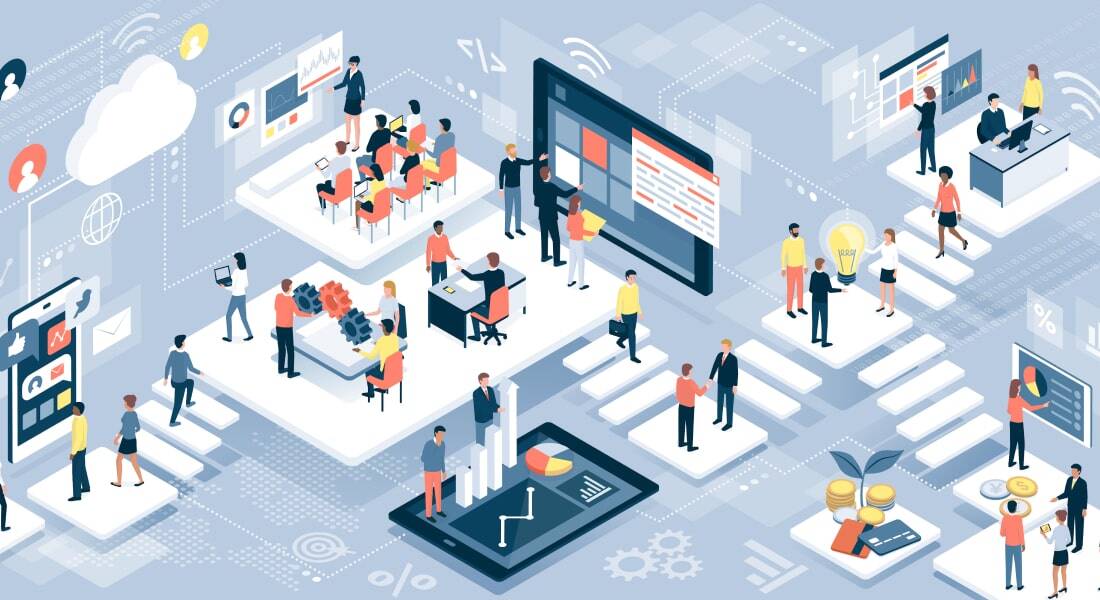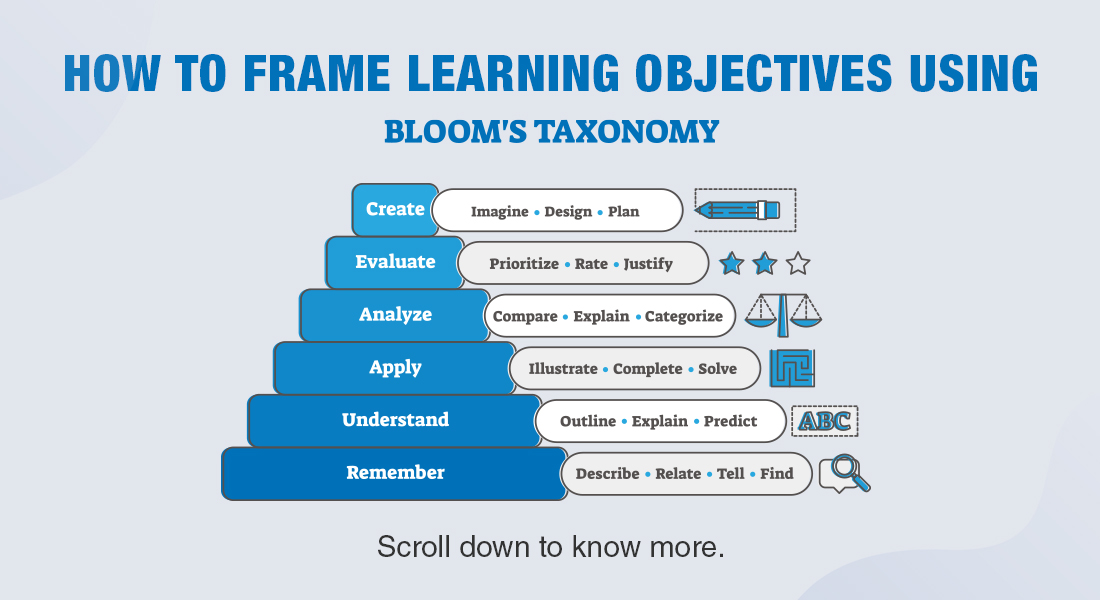The Future of Corporate Training: Trends, Evaluation, and Learning Strategies

Welcome back to our exploration of the ever-evolving landscape of corporate training! In part 1 of this series, we laid the groundwork while in part 2, we explored innovative design and implementation strategies. Now, in this pivotal Part 3, we're set to uncover the future trajectory of corporate training, exploring emerging trends, the crucial role of evaluation, and the imperative of continuous learning strategies in nurturing a workforce poised for success.
→ Subscribe to Newsletter Now!
Table of Contents
- How Can the Effectiveness of Corporate Training Be Measured?
- What Key Performance Indicators (KPIs) Should Be Used?
- How Can Feedback and Surveys Be Utilized to Assess Training Effectiveness?
- What Methods Can Be Used for Performance Assessments?
- How Can You Calculate the ROI of Corporate Training?
- What Metrics Are Used to Determine Return on Investment?
- How Can You Demonstrate the Value of Training to Stakeholders?
- What Are the Current Trends in Corporate Training for 2024?
- How Are Emerging Technologies Shaping Corporate Training?
- What Role Does Personalization and Adaptive Learning Play?
- How Can a Continuous Learning Culture Be Promoted?
- What is the Difference Between Corporate Training and Employee Development?
- How Can Integrated Approaches Enhance Both Training and Development?
- What is the Future Outlook for Corporate Training?
- How Can Organizations Commit to Continuous Learning?
As the business world continues to transform at an unprecedented pace, the demands placed on employees are growing ever more complex. To remain competitive and agile, organizations must not only invest in training but also embrace a forward-thinking approach that aligns with the evolving needs of both the workforce and the industry itself. So, let's dive into the trends that are shaping the future of corporate training, the tools and techniques for measuring its impact, and the strategies for fostering a culture of perpetual growth and development.
Trying to Predict the Future of Corporate Training?
Here are a few trends
- Microlearning
- Virtual and Augmented Reality
- Artificial Intelligence (AI)
- Metaverse Integration
- Ethical AI and Data Privacy
- Neuroscience-Informed Learning Design
How Can the Effectiveness of Corporate Training Be Measured?
In the realm of corporate training, the adage "what gets measured gets managed" holds particularly true. Evaluating the effectiveness of training initiatives is essential not only to justify the investment but also to ensure that the programs are delivering tangible benefits to both employees and the organization as a whole. Fortunately, several methods and models exist to help organizations accurately gauge the impact of their training efforts.
Key Metrics and Frameworks
1. Kirkpatrick's Four Levels of Evaluation: This classic model offers a comprehensive approach, assessing reaction, learning, behavior, and results. By analyzing learner satisfaction, knowledge acquisition, on-the-job application, and broader business impact, organizations can gain a holistic understanding of training effectiveness.

2. Return on Investment (ROI): While calculating ROI can be complex, it provides a concrete financial measure of the value of training. By comparing the costs of the program to the resulting benefits, such as increased productivity, reduced errors, or improved employee retention, organizations can demonstrate the tangible value of their investment.
3. Key Performance Indicators (KPIs): By identifying specific, measurable goals aligned with the training objectives, organizations can track progress and identify areas for improvement. KPIs might include metrics such as completion rates, assessment scores, time to proficiency, or even broader business outcomes like sales figures or customer satisfaction ratings.
4. Learner Feedback and Surveys: Gathering direct feedback from participants can provide valuable insights into their experiences, satisfaction levels, and perceived impact of the training. Surveys can also assess the relevance, applicability, and overall effectiveness of the program.
5. On-the-Job Observation and Performance Reviews: Observing how employees apply their newfound knowledge and skills in real-world situations offers a practical measure of training effectiveness. Performance reviews can also reveal improvements in efficiency, productivity, or problem-solving abilities.
What Key Performance Indicators (KPIs) Should Be Used?
Selecting the right Key Performance Indicators (KPIs) is essential for gauging the effectiveness of corporate training initiatives. The specific KPIs chosen should align with the organization's goals, the nature of the training program, and the desired outcomes. Several key indicators can provide valuable insights across various training contexts, including learning and development KPIs and on-the-job performance KPIs.
Learning and development KPIs, such as completion rates, assessment scores, time to proficiency, learner satisfaction, and knowledge retention, help measure the effectiveness of the training content, delivery methods, and learners' engagement. On the other hand, on-the-job performance KPIs, such as productivity, quality, employee engagement, and retention, evaluate the impact of training on employee performance and the broader workforce.
How Can Feedback and Surveys Be Utilized to Assess Training Effectiveness?
Feedback and surveys are powerful tools for assessing training effectiveness. They provide a direct line of communication between learners and training organizers, offering invaluable insights into the efficacy of corporate training programs. This qualitative data complements quantitative metrics, providing a nuanced understanding of the training experience from the learner's perspective.
Surveys can be administered at various stages of the training process, including pre-training, post-training, and even months later. Pre-training surveys help gauge learners' expectations, prior knowledge, and learning styles, enabling trainers to tailor their content and delivery methods. Post-training surveys capture learners' initial reactions, satisfaction levels, and perceived learning gains. Long-term follow-up surveys assess knowledge retention, application of skills on the job, and the overall impact of the training on performance and productivity.
What Methods Can Be Used for Performance Assessments?
Performance assessments offer a crucial lens into the effectiveness of corporate training by measuring how learners apply their newfound knowledge and skills in real-world situations. These assessments go beyond theoretical knowledge, focusing on observable behavior and tangible results.
Traditional Performance Assessment Methods
- Performance Reviews: These formal assessments, typically conducted annually or bi-annually, provide an opportunity to evaluate an employee's overall performance, including skills acquired through training.
- Self-Assessments: Learners reflect on their own progress, strengths, and areas for improvement. This promotes self-awareness and encourages active participation in the learning process.
- Manager Assessments: Supervisors evaluate their direct reports based on their performance, often using standardized rating scales or performance metrics.
- 360-Degree Feedback: This method gathers feedback from multiple sources, including peers, subordinates, and even customers, offering a holistic view of an employee's performance.
Innovative Performance Assessment Techniques
- Simulations and Role-Plays: These interactive activities mimic real-world scenarios, allowing learners to demonstrate their skills and decision-making abilities in a safe environment.

- Project-Based Assessments: Learners apply their knowledge to complete a specific task or project, showcasing their problem-solving and critical thinking skills.
- On-the-Job Observations: Supervisors directly observe learners performing their duties, providing immediate feedback and identifying areas for improvement.
- Competency-Based Assessments: These assessments focus on specific skills or behaviors required for success in a particular role.
- Data Analytics: Analyzing performance data, such as sales figures, customer satisfaction ratings, or productivity metrics, can reveal the impact of training on key performance indicators.
How Can You Calculate the ROI of Corporate Training?
Return on Investment (ROI) is a key metric for evaluating the financial impact of corporate training programs. It provides a quantitative measure of the value generated by the training initiative, helping organizations justify their investment and make informed decisions about future training initiatives.

Steps for Calculating ROI
- Identify and Quantify Benefits: Determine the specific benefits the training is expected to deliver and assign a monetary value to each. For example, if the training is expected to increase sales by 5%, calculate the additional revenue generated by this increase.
- Calculate Training Costs: Compile all expenses associated with the training program, including direct costs (instructor fees, materials) and indirect costs (lost productivity).
- Calculate Net Benefits: Subtract the training costs from the total benefits.
- Apply the ROI Formula: Divide the net benefits by the training costs and multiply by 100% to express the ROI as a percentage.
Challenges in Calculating ROI
- Identifying and Quantifying Intangible Benefits: Some benefits, such as improved employee morale or enhanced customer satisfaction, can be challenging to quantify in monetary terms.
- Isolating the Impact of Training: It can be difficult to attribute specific business outcomes solely to training, as other factors may also be contributing.
- Long-Term vs. Short-Term ROI: Some benefits, such as improved employee retention, may take longer to materialize, making it important to consider both short-term and long-term ROI.
What Metrics Are Used to Determine Return on Investment?
Calculating the Return on Investment (ROI) for corporate training involves identifying and quantifying both the benefits gained and the costs incurred. These metrics can be broadly categorized into tangible and intangible, each requiring distinct approaches for measurement and valuation.
Tangible benefits include increased productivity, improved sales, reduced errors and rework, decreased employee turnover, and improved customer satisfaction. These benefits can be measured and quantified using various metrics such as output, sales figures, cost savings, employee turnover rates, and customer satisfaction scores. For instance, increased productivity can be measured by estimating the monetary value of additional output or time saved.
Intangible benefits include enhanced employee morale and engagement, improved decision-making and problem-solving skills, and enhanced innovation and adaptability. These benefits are more challenging to quantify but can be assessed through surveys, feedback, and observation. For example, enhanced employee morale and engagement can be indirectly assessed through surveys, feedback, and observation, as they contribute to a positive work environment and can indirectly impact productivity and retention.
Costs associated with corporate training can be categorized into direct and indirect costs. Direct costs include instructor fees, training materials and resources, technology and equipment, and travel and accommodation. Indirect costs include lost productivity and administrative overhead. Lost productivity refers to the cost of employees' time away from their regular duties during training, which can be estimated based on their salaries and the duration of the training. Administrative overhead includes costs related to planning, organizing, and managing the training program, such as staff time and resources.
The Rapid Training Energizer — Newsletter
Get Access to the Best:
- Resources
- Learning Events
- Offers
- And More!
How Can You Demonstrate the Value of Training to Stakeholders?
Effectively communicating the value of corporate training to stakeholders is crucial for securing ongoing support and investment. This involves presenting a compelling narrative that highlights the positive impact of training on individual employees and the organization as a whole. Key strategies for demonstrating value include leveraging data and metrics, sharing success stories, linking training to business goals, focusing on impactful outcomes, and communicating in stakeholder language.
Using compelling visuals, providing regular updates, and soliciting feedback from stakeholders further enhance the communication process. By implementing these strategies, organizations can effectively demonstrate the value of corporate training, ensuring continued support and investment in this valuable resource.
What Are the Current Trends in Corporate Training for 2024?
1. Microlearning
Bite-sized learning modules, delivered in short bursts, are becoming increasingly popular. This approach caters to busy schedules and short attention spans, enabling learners to acquire knowledge and skills in a more digestible format.
2. Virtual and Augmented Reality
Immersive technologies like VR and AR are transforming the training landscape. These tools create realistic simulations and interactive experiences, enabling learners to practice skills and gain hands-on experience in a safe environment.
3. Artificial Intelligence (AI)
AI-powered chatbots and virtual assistants are being used to provide on-demand support and guidance to learners. AI is also being leveraged to automate administrative tasks and personalize learning content.
4. Metaverse Integration
The nascent metaverse presents a new frontier for immersive learning experiences. Organizations are experimenting with virtual worlds where employees can collaborate, learn, and practice skills in a simulated environment that transcends physical limitations.
5. Ethical AI and Data Privacy
As AI becomes more integrated into training, concerns about ethical implications and data privacy are growing. Organizations are prioritizing transparent AI algorithms, secure data handling practices, and training on responsible AI use.
6. Neuroscience-Informed Learning Design
Insights from neuroscience are being applied to enhance training effectiveness. Brain-based learning principles, such as spaced repetition and multi-sensory learning experiences, are being incorporated into training design to optimize learning outcomes.
How Are Emerging Technologies Shaping Corporate Training?
Artificial Intelligence (AI) and Machine Learning (ML) are revolutionizing learning and development. AI-powered adaptive learning platforms personalize content and learning paths based on individual needs, while AI-powered chatbots and virtual assistants provide on-demand support. ML algorithms analyze learner data to identify areas for improvement and predict future learning needs.
Virtual and Augmented Reality (VR/AR), Blockchain, Natural Language Processing (NLP), Internet of Things (IoT), and Wearable Technology are other emerging technologies that are transforming learning and development. VR/AR creates realistic scenarios for hands-on training, while Blockchain provides a secure and transparent way to store and verify credentials. NLP enables more sophisticated interactions with AI-powered learning tools, IoT devices generate data that can be used for real-time performance tracking and personalized feedback, and wearable technology offers new possibilities for monitoring learner engagement and tracking physical activity during training.
What Role Does Personalization and Adaptive Learning Play?
Personalization involves tailoring the learning experience to suit each learner's skills, knowledge gaps, learning styles, and career goals. It moves away from standardized training programs and delivers content and learning paths that resonate with individual learners. Personalization includes pre-assessments, skill gap analysis, custom eLearning development, adaptive content delivery, flexible learning paths, personalized feedback and coaching, and gamification to enhance engagement.
Adaptive learning takes personalization a step further by continuously adjusting the learning experience in real-time based on learners' interactions and performance. It provides real-time feedback, adapts content difficulty and complexity, optimizes learning paths, and offers AI-powered recommendations. Adaptive learning dynamically adjusts to learner needs, ensuring they are challenged but not overwhelmed, and receive relevant resources and support tailored to their individual learning journeys.
How Can a Continuous Learning Culture Be Promoted?
A continuous learning culture is more than just training programs; it's a mindset where learning is ingrained in everyday activities. To thrive in a rapidly changing world, companies must cultivate an environment where learning is prioritized, celebrated, and accessible to all. Key strategies include: leading by example, making learning accessible, integrating learning into workflows, fostering a growth mindset, celebrating learning successes, encouraging knowledge sharing, providing time and resources, and measuring and evaluating the impact of learning initiatives.

Organizations can create a culture of continuous learning by implementing various strategies. Leaders should actively engage in their own development and encourage managers to share their learning experiences. A variety of learning opportunities should be offered, and learning should be integrated into workflows. A growth mindset should be fostered, and learning successes should be celebrated. Knowledge sharing should be encouraged, and employees should be provided with time and resources for learning. The impact of learning initiatives should be regularly assessed and evaluated. By implementing these strategies, organizations can create a culture of continuous learning that will help them thrive in a rapidly changing world.
What is the Difference Between Corporate Training and Employee Development?
Corporate training focuses on imparting specific skills and knowledge necessary for employees to perform their current roles efficiently. It's typically task-oriented, addressing immediate performance needs and aiming to bridge any skill gaps that might hinder productivity. Key characteristics of corporate training include specific and measurable goals, a short-term focus, skill-based learning, and formal and structured delivery methods.
Employee development takes a broader perspective, focusing on the holistic growth and advancement of employees beyond their current roles. It encompasses activities that nurture their potential, expand their capabilities, and prepare them for future challenges and opportunities. Key characteristics of employee development include a long-term focus, a holistic approach, self-directed learning, and a combination of formal and informal learning experiences.
How Can Integrated Approaches Enhance Both Training and Development?
A synergistic approach that seamlessly combines training and development initiatives can create a powerful and holistic learning ecosystem within an organization. This integration leverages the strengths of both disciplines, fostering a culture of continuous learning and empowering employees to reach their full potential. Here are a few benefits of an integrated approach:
- Enhanced Learning Experience: By combining immediate skill acquisition with long-term development, employees receive a comprehensive learning journey that supports both their current and future roles.
- Improved Employee Engagement: A well-integrated approach demonstrates the organization's commitment to employee growth, fostering a sense of value and motivation.

- Increased Organizational Agility: Employees equipped with a diverse skill set and a growth mindset are better prepared to adapt to change and contribute to innovation.
- Talent Retention: Providing opportunities for both training and development signals to employees that the company is invested in their future, encouraging them to stay and grow within the organization.
- Optimized ROI: An integrated approach maximizes the return on investment in training and development by ensuring that efforts are aligned with both short-term performance needs and long-term strategic goals.
What is the Future Outlook for Corporate Training?
The future of corporate training is poised for continued innovation and transformation. Technological advancements, evolving workforce dynamics, and the relentless pace of change in the global business landscape will drive this transformation. Key predictions and insights include hyper-personalized learning, seamless integration with work, skills-based talent development, emphasis on lifelong learning, data-driven decision-making, increased focus on soft skills, hybrid learning models, virtual and augmented reality, AI-powered learning, social and collaborative learning, and a focus on Diversity, Equity, and Inclusion (DEI).
Organizations will shift their focus from traditional job titles and hierarchies to skills-based talent development. They will invest in creating a culture of lifelong learning, providing ongoing training opportunities, and fostering a growth mindset among employees. The use of learning analytics and data insights will become even more prevalent to measure training effectiveness, identify skill gaps, personalize learning experiences, and make informed decisions about training investments.
The future of corporate training is bright and full of possibilities. By embracing innovation, leveraging technology, and prioritizing employee-centric approaches, organizations can create a learning ecosystem that empowers their workforce to thrive in the ever-evolving world of work.
How Can Organizations Commit to Continuous Learning?
- Embed Learning in the Organizational DNA: Make learning a core value, explicitly stated in the company's mission, vision, and values. Integrate learning into performance reviews, promotion criteria, and talent development plans.
- Provide Resources and Infrastructure: Allocate budgets, time, and tools that facilitate learning. This includes providing access to learning management systems, external online learning platforms, mentorship programs, conferences, and professional development opportunities.
- Recognize and Reward Learning: Acknowledge and incentivize employees who actively engage in learning initiatives. This could include promotions, bonuses, public recognition, or opportunities to lead new projects that leverage their expanded skillsets.
- Encourage Risk-Taking and Experimentation: Create a psychologically safe environment where employees feel comfortable trying new approaches and learning from their mistakes.
- Foster Collaboration and Knowledge Sharing: Break down silos and encourage cross-functional collaboration. Implement tools and platforms for sharing best practices, insights, and lessons learned.
- Champion Leadership Development: Equip leaders with the skills to foster learning within their teams, providing coaching, mentorship, and opportunities for their own continuous development.
- Measure and Evaluate Impact: Regularly assess the effectiveness of learning initiatives and their impact on individual, team, and organizational performance. Use these insights to refine strategies and demonstrate the value of learning to stakeholders.
Wrapping Up!
The future of corporate training is a dynamic landscape where adaptability, innovation, and a commitment to lifelong learning reign supreme. Remember, the journey of learning is never truly complete. By nurturing a passion for growth and development, organizations can not only survive but thrive in the face of an ever-changing world. If you are curious to know more about the various trends and emerging technologies in the corporate training landscape, you should definitely subscribe to our newsletter now!







